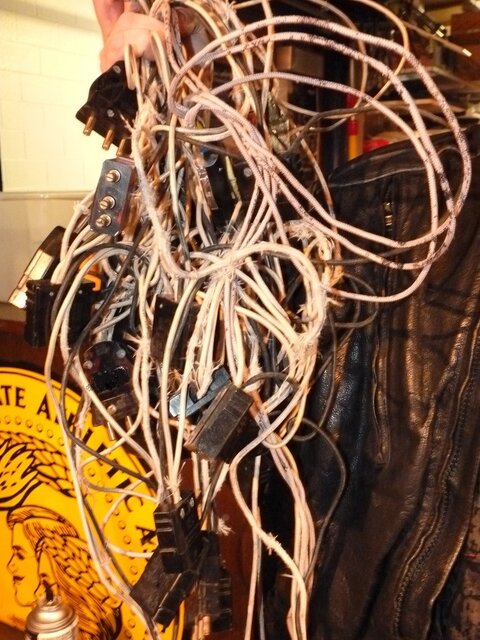To all at Control Booth,
I was touring out catwalks the other day when I came across this monstrosity:

For those that cant see the image it is 9 Twofers made from nothing but 12 gauge (asbestos coated on some) wires. Being a somewhat good person I chose to take those down make some real ones. I keep finding things like this all over my theatre and some of the things are beyond my skill level. I am wondering is there a GOOD resource for theatre safety codes online somewhere? USITT was a good start ANSI was less helpful and OSHA was like reading a tax form. Is there a good source for safety info on Rigging, fire (with pyro would be wonderful), elec, and everything else that goes on in our world.
Even if I could get just one of those I would be very happy.
Thank you to all and may your theatres be SAFE,
GBTimex
I was touring out catwalks the other day when I came across this monstrosity:

For those that cant see the image it is 9 Twofers made from nothing but 12 gauge (asbestos coated on some) wires. Being a somewhat good person I chose to take those down make some real ones. I keep finding things like this all over my theatre and some of the things are beyond my skill level. I am wondering is there a GOOD resource for theatre safety codes online somewhere? USITT was a good start ANSI was less helpful and OSHA was like reading a tax form. Is there a good source for safety info on Rigging, fire (with pyro would be wonderful), elec, and everything else that goes on in our world.
Even if I could get just one of those I would be very happy.
Thank you to all and may your theatres be SAFE,
GBTimex


